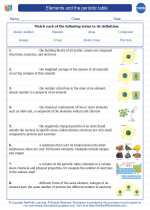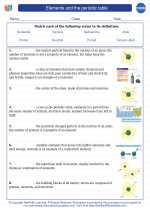Appearance in Chemistry
Appearance is an important characteristic used to describe and identify substances in chemistry. It refers to the physical qualities and attributes of a substance that can be observed with the naked eye or with the help of instruments. The appearance of a substance can provide valuable information about its properties and composition.
Factors Affecting Appearance
The appearance of a substance can be influenced by various factors, including:
- Color: The specific hue or shade of a substance, which is determined by the wavelengths of light that are absorbed or reflected by the substance.
- Texture: The feel or surface characteristics of a substance, such as smooth, rough, powdery, or crystalline.
- State of Matter: Whether the substance is a solid, liquid, or gas at a given temperature and pressure.
- Transparency/Opacity: How much light can pass through the substance, ranging from transparent to opaque.
- Luster: The way light is reflected from the surface of a substance, which can be described as shiny, metallic, dull, or glassy.
Common Appearance Descriptors
Chemists often use specific terms to describe the appearance of substances. Some common descriptors include:
- Colorless: A substance that has no apparent color when observed in bulk.
- Opaque: A substance that does not allow light to pass through, preventing the visibility of objects on the other side.
- Translucent: A substance that allows some light to pass through, but objects on the other side are not clearly visible.
- Transparent: A substance that allows light to pass through with minimal distortion, allowing objects on the other side to be clearly seen.
- Crystalline: A substance with a regular, repeating three-dimensional arrangement of atoms or molecules, often characterized by flat surfaces and sharp edges.
- Amorphous: A substance lacking a regular, crystalline structure, often appearing as a random arrangement of atoms or molecules.
Importance of Appearance
The appearance of a substance can provide important clues about its chemical and physical properties. For example, the color of a compound can indicate the presence of specific chemical bonds or functional groups. The texture and transparency of a substance can affect its behavior in various processes, such as filtration, distillation, and precipitation. Additionally, changes in appearance can signal chemical reactions or phase transitions, allowing chemists to monitor and analyze these transformations.
Study Guide
When studying the topic of appearance in chemistry, consider the following key points:
- Learn to accurately describe the appearance of different substances using appropriate terminology.
- Understand the factors that influence the appearance of a substance, including color, texture, state of matter, transparency, and luster.
- Explore how the appearance of a substance can be used to infer its chemical and physical properties.
- Practice observing and recording the appearance of substances in laboratory experiments and real-world applications.
- Consider the role of appearance in qualitative analysis, identification of unknown substances, and the interpretation of chemical reactions.
By mastering the concept of appearance in chemistry, you will develop a valuable skill set for analyzing and characterizing a wide range of materials and compounds.
.◂Chemistry Worksheets and Study Guides High School. Elements and the periodic table

 Worksheet/Answer key
Worksheet/Answer key
 Worksheet/Answer key
Worksheet/Answer key
 Vocabulary/Answer key
Vocabulary/Answer key
 Vocabulary/Answer key
Vocabulary/Answer key
 Vocabulary/Answer key
Vocabulary/Answer key
